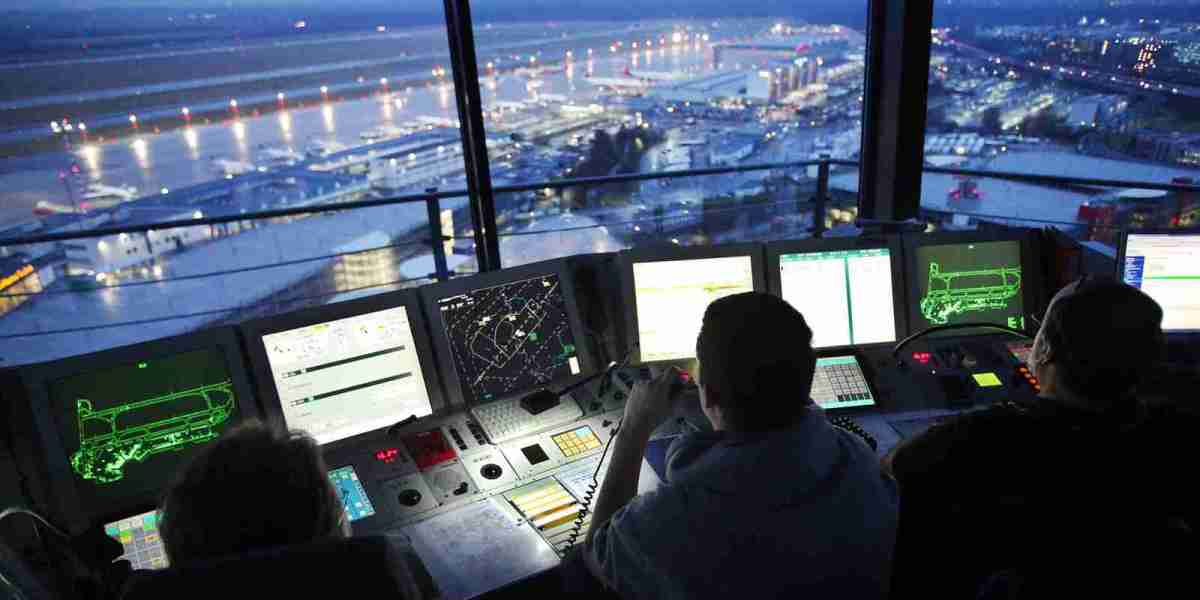The air traffic control (ATC) market has undergone significant developments in recent years, as the aviation industry continues to expand and modernize. With increasing air traffic, technological advancements, and growing demands for efficiency, safety, and sustainability, the ATC market is evolving rapidly. This article delves into the key developments in the ATC market, highlighting technological innovations, regulatory changes, regional initiatives, and the challenges that the industry faces moving forward.
1. Technological Advancements in Air Traffic Control
One of the most critical developments in the ATC market is the ongoing integration of advanced technologies. These innovations are transforming the way air traffic is managed, making it safer, more efficient, and cost-effective. Some key technological advancements shaping the market include:
Artificial Intelligence (AI) and Automation: AI is revolutionizing air traffic management by improving decision-making and reducing human error. AI-powered systems can predict air traffic patterns, detect potential conflicts, and optimize flight paths. Automation is also helping to streamline routine tasks, freeing air traffic controllers to focus on more complex operations. This shift towards automation reduces the risk of delays and enhances the efficiency of air traffic control systems.
Satellite-Based Navigation and Surveillance: Traditional radar systems are being replaced by satellite-based technologies like Automatic Dependent Surveillance–Broadcast (ADS-B). ADS-B provides accurate, real-time tracking of aircraft, even in remote or oceanic regions where radar coverage is limited. This development improves the safety and reliability of air traffic management, as it allows for better tracking of aircraft and more efficient use of airspace.
Remote and Digital Towers: Remote air traffic control towers, which use high-definition cameras and sensors, are emerging as a cost-effective solution for managing air traffic at smaller airports. These towers allow air traffic controllers to monitor and manage multiple airports from a central location, reducing operational costs and improving efficiency. Digital towers offer greater flexibility and scalability, enabling airports to adapt to growing air traffic demand without the need for large, expensive control towers.
Cloud Computing and Big Data: Cloud-based platforms are enabling real-time data sharing and collaborative decision-making between air traffic controllers, airlines, and airport operators. Big data analytics is being used to analyze flight patterns, identify trends, and optimize airspace management. These technologies help reduce delays, improve fuel efficiency, and enhance overall air traffic management.
2. Regional Initiatives and Modernization Programs
Several regional initiatives are driving the development of air traffic control systems, particularly in regions with rapidly growing air traffic. Governments and international organizations are investing heavily in modernizing their ATC infrastructure to support increased demand for air travel. Key programs include:
NextGen (U.S.): The Federal Aviation Administration's (FAA) Next Generation Air Transportation System (NextGen) is a major initiative to modernize the U.S. airspace system. NextGen aims to improve air traffic management by implementing satellite-based navigation, digital communication, and advanced traffic flow management tools. The system will help reduce delays, optimize flight routes, and improve fuel efficiency.
SESAR (Europe): The Single European Sky ATM Research (SESAR) program is designed to improve air traffic management across Europe by creating a harmonized airspace system. SESAR focuses on integrating new technologies, improving airspace capacity, and reducing environmental impact. The program aims to enhance cooperation between European air navigation service providers (ANSPs) and improve overall efficiency.
Asia-Pacific and Middle East Growth: Countries in the Asia-Pacific region, such as China and India, are investing heavily in modernizing their ATC infrastructure to support the growing demand for air travel. The Middle East, particularly the United Arab Emirates and Saudi Arabia, is also witnessing rapid growth in air traffic and investing in smart airport technologies and advanced air traffic management systems. These regions are expected to see the highest growth in the ATC market.
3. Challenges in the Air Traffic Control Market
Despite the significant advancements, the ATC market faces several challenges that could hinder its growth and development. These challenges include:
High Implementation Costs: Modernizing air traffic control systems and implementing new technologies can be expensive. The costs of upgrading infrastructure, training personnel, and integrating new systems can be prohibitive for smaller airports and air navigation service providers. However, as technology becomes more accessible, these costs are expected to decrease over time.
Cybersecurity Risks: As ATC systems become more digitized and reliant on cloud-based platforms, the risk of cyberattacks increases. Protecting sensitive air traffic data from cyber threats is critical to ensuring the safety and security of the aviation industry. Governments and industry stakeholders must work together to develop robust cybersecurity measures to safeguard ATC systems.
Workforce Challenges: The shortage of skilled air traffic controllers is a growing concern, especially as technology becomes more advanced. While automation can help alleviate some of the workload, human expertise will still be needed to manage complex air traffic situations. Training programs and recruitment efforts will be crucial in addressing this issue.
4. The Future of the Air Traffic Control Market
The future of the ATC market looks promising, with several developments on the horizon that will continue to shape the industry:
Integration with Unmanned Aerial Vehicles (UAVs): The rise of drones and UAVs presents new challenges for air traffic control systems. The integration of UAVs into existing airspace will require new management frameworks, technologies, and regulations to ensure safety. The ATC market will need to adapt to accommodate these new types of aircraft.
Sustainability and Environmental Goals: As the aviation industry faces growing pressure to reduce carbon emissions, the ATC market will play a key role in improving fuel efficiency and reducing environmental impact. By optimizing flight routes, reducing delays, and promoting sustainable aviation practices, ATC systems will help the industry achieve its environmental goals.
Conclusion
The air traffic control market has seen significant developments driven by technological innovations, regional modernization efforts, and the growing demand for air travel. While challenges such as high implementation costs, cybersecurity risks, and workforce shortages persist, the future of the ATC market looks bright. Continued investment in new technologies, international collaboration, and sustainable practices will be essential to the growth and evolution of the industry. As the global aviation sector continues to expand, air traffic control systems will play a pivotal role in ensuring the safety, efficiency, and sustainability of airspace management.




